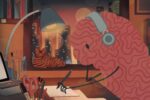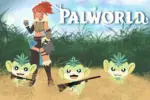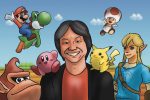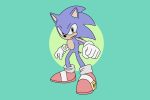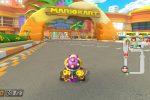“The Legend of Zelda” franchise is easily one of Nintendo’s most popular series. It has a long, complicated history that is virtually impossible to escape from. Specifically, the intricate timeline of events fans and Nintendo itself has tried to make sense of since “A Link to the Past” came out as a prequel to the first two games. Things got even more complicated once “Ocarina of Time” came out and split the timeline into three branches: the Downfall Timeline, the Child Timeline and the Adult Timeline. While at face value the three timelines appear very different, they are connected and each helps make up the world of “Breath of the Wild” in different ways.
The Unified Timeline
First, it’s helpful to provide a basic breakdown of each timeline and how they came to be, starting with the Unified Timeline that the others branch from. The Unified Timeline consists of four games: “Skyward Sword,” “The Minish Cap,” “Four Swords Adventures” and “Ocarina of Time.”
“Skyward Sword” explains the ancient war between the Demon King Demise and the Goddess Hylia, the origin of the Master Sword. It describes how Demise’s curse led to Ganon — a threat that would plague Hyrule for generations to come — and a hero and a princess that would rise up against him. “The Minish Cap” and “Four Swords” explain the origins of the Four Swords, and the events of “Ocarina of Time” provide explanations for the existence of the other three timelines.
The Downfall Timeline
Easily the most enigmatic in concept, the Downfall Timeline occurs if the Hero of Time fails to save Hyrule and is defeated by Ganondorf. In this, Ganondorf obtains the Triforce of Courage from the fallen hero and the Triforce of Wisdom from Zelda. He unites them with his piece, the Triforce of Power, and transforms into the evil beast Ganon. To stop Ganon from using the Triforce to make a wish, Zelda is forced to seal Ganon with the Triforce into the Sacred Realm, which, in his imprisonment, becomes twisted into the Dark World. Naturally, this seal doesn’t last forever, and Ganon returns four times, and would have come back a fifth had the hero died in “The Adventure of Link.”
Hyrule, its people and its allies suffer greatly in the Downfall Timeline. After Ganon is sealed away, Hyrule is plagued by war as thieves seek a way into the Dark World in hopes of claiming the Triforce for their own. The Zoras are corrupted into the River Zora, who are hostile toward Hylians with a couple of exceptions. The Gorons leave Hyrule altogether and settle in the neighboring lands of Holodrum and Labrynna. Even after the Triforce is liberated from Ganon and entrusted to the Royal Family of Hyrule, the kingdom gradually declines and falls into ruin. All the bloodshed and tragedy that plagues Hyrule is catalyzed by the Hero of Time’s failure to defeat Ganondorf and save the kingdom.
The other two timelines exist if the Hero of Time does defeat Ganondorf. VortexxyGaming provides an interesting theory as to how the Downfall Timeline can exist along with the Child and Adult Timelines. She theorizes that the Zelda in “The Adventure of Link” makes a wish to the Triforce to prevent Ganon from rising to power. As a result, the events of “Ocarina of Time” are altered, which brings us to the events of the Adult Timeline.
The Adult Timeline
Vortex speculates that the Zelda in “Ocarina of Time” has nightmares as a result of the wish, which allows her to sense Ganondorf’s intentions as well as Link’s role as the hero. These suspicions are necessary for Zelda to send Link to find the other two spiritual stones, open the Door of Time and get the Triforce before Ganondorf does. As Link draws the Master Sword, it seals him into the Sacred Realm for seven years until he is old enough to wield the sword. After that, Link is tasked with awakening the six sages needed to seal Ganondorf away. Through this journey, he grows powerful enough to defeat Ganondorf and his beast form, Ganon, in single combat. Zelda and the sages are then able to seal Ganondorf into the Sacred Realm.
Zelda helps Link save Hyrule, but she makes one fatal mistake: She sends him back to his own time to live the childhood he lost. While Zelda’s intentions are good, she inadvertently leaves her own kingdom unprotected. After centuries of imprisonment in the Sacred Realm, Ganondorf finally breaks free and rampages across Hyrule with no Hero of Time to oppose him. All the people can do is pray, and Ganondorf becomes so dangerous that the gods are forced to flood the land.
Eventually, Ganondorf will be defeated by the Hero of Winds during “The Wind Waker,” but it is too late for Hyrule. The king makes a wish to the Triforce to flood the land again along with himself and Ganondorf, washing away the remnants of the kingdom. This sends Link and Zelda back to the surface in search of a new land. The events of “Ocarina of Time” result in Hyrule’s destruction in the Adult Timeline. Despite the death of Hyrule in the Adult Timeline, Zelda’s efforts are not completely in vain.
The Child Timeline
After Zelda sends the Hero of Time back to the moment before he draws the Master Sword, he closes the Door of Time and warns the kingdom about Ganondorf’s treachery before he can betray the kingdom. This ends Ganondorf’s conquest before it begins.
Traces of the events of the Adult Timeline influence the events of the Child Timeline. The Triforce is split in three like it was when Ganondorf touched it in the Adult Timeline. Courage goes to Link, Wisdom goes to Zelda and Power goes to Ganondorf. In response to the young hero’s warning, Ganondorf is nearly killed in an execution attempt by the ancient sages. However, Ganondorf is saved by the Triforce of Power and kills one of the sages before the rest seal him in the Twilight Realm.
Although Ganondorf returns twice in “Twilight Princess” and “Four Swords Adventures,” there will always be a hero to defeat him before he can do too much damage. Since the kingdom is protected by new heroes, Hyrule flourishes and sees greater peace than it ever did in the Downfall and Adult Timelines.
The Connected Histories in “Zelda”
If Vortex’s theory is true, the Downfall Timeline leads to the creation of the Adult Timeline thanks to Zelda’s wish to the Triforce, and the Adult Timeline leads to the creation of the Child Timeline thanks to Zelda’s decision to send the Hero of Time back seven years. Yes, it’s convoluted and extremely complicated, but the three histories are indisputably connected through the events of “Ocarina of Time,” and the echoes from all three timelines can be seen in “Breath of the Wild.”
Reunified Timeline in the “Zelda” Franchise
The foundations of “Breath of the Wild,” the game that was meant to usher in a new beginning for the Zelda series, connects to all three timelines. Countless fans have theorized about the placement of “Breath of the Wild.” As Steven RichtMyer of Screen Rant documents, the Rito — a race that only explicitly appears in the Adult Timeline — exist in “Breath of the Wild” along with the Zora. The Zora appear in the Downfall and Child Timelines but are gone in the Adult Timeline after having evolved into the Rito. Lynels and Spectacle Rock only appear in the Downfall Timeline, yet they appear in “Breath of the Wild.” Zelda references “Twilight Princess” during Link’s ceremony, pointing toward the Child Timeline.
There is one critical detail about “Breath of the Wild” that no one I’ve seen has picked up on: the state of Hyrule. Hyrule is in decline in the Downfall Timeline, and completely washed away in the Adult Timeline. So logically, if Hyrule had survived for thousands of years, it makes the most sense for “Breath of the Wild” to take place at the end of the Child Timeline where the land of Hyrule is alive and well after the last game in the split, “Four Swords Adventures.” Although, there is more than enough evidence to confidently place “Breath of the Wild” in the other two branches.
Why the Timelines Are Important to “The Legend of Zelda: Breath of the Wild”
The fact of the matter is that the details that point toward the previous games are too significant to ignore. Each timeline contributes something different to “Breath of the Wild.” The Downfall Timeline provides Lynels and Spectacle Rock, the Adult Timeline provides the Rito and the Koroks and the Child Timeline provides a Hyrule to save. It’s not a departure from the timelines, nor should it be.
In fact, it’s quite the opposite. It’s a culmination of all the timelines, and Nintendo is right to leave it up to the fans to decide where it belongs. There’s enough material for each of us to make up our own mind where “Breath of the Wild” fits, and there’s no right or wrong answer.
The timelines are important to “Breath of the Wild” — they’ve always been important and always will be important. Many of us have played at least some of the previous games, so pointing out these references is a way of integrating our experiences with the Zelda games into “Breath of the Wild.” It’s similar to how Link’s muteness is meant to immerse us in the role. You can enjoy “Breath of the Wild” for what it is, like you can other Zelda games, but remembering the timelines and picking up on the nods to all of them and how each fits into the game enriches the experience. “Breath of the Wild” is very much a game where you get out of it what you put into it.




